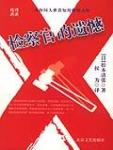Chapter 1 Translation sequence
Seicho Matsumoto is an art master of Japanese modern social mystery novels. He is very active in wide fields such as mystery novels, social novels, historical novels, realistic novels, and social comments, and has left great achievements for the history of Japanese literature.His masterpieces, "The Sand Machine" and so on have long been familiar to readers in our country.According to the list of favorite writers surveyed by the Yomiuri Shimbun in recent years, Master Matsumoto ranks fourth, and it remains unchanged all year round.Compared with Junichi Watanabe's eighth place, Natsume Soseki's tenth place, and Haruki Murakami's twenty-second place, its influence can be seen.
Master Matsumoto is a prolific writer. From short stories to novels, from history to modern times, from common people's life to political shady scenes, the subject matter of his works covers every corner of society, with as many as a thousand articles.From its rich content, we can see the close connection between the master's aspirations and life hardships.
Matsumoto Seicho was born in a merchant family in Kokura City, Kitakyushu.He grew up in a poor family and was forced to drop out of school at the age of 13 to make a living. He only had primary school education.Master Matsumoto used to be a street vendor, an apprentice, and an advertising draftsman for the Asahi Shimbun's western head office in Kokura.He was detained for contacting proletarian literature. He enlisted in the army in 1943 and was sent to North Korea as a health soldier. After the war, he returned to the original newspaper to resume his post.In the ruins after the war, in order to support his family of seven, he had to travel between Kansai and Kyushu to wholesale brooms, and lived a humiliating life of discrimination for a long time.These experiences injected sufficient social nutrition into his later ideology and literary creation.
Master Matsumoto read foreign mystery novels when he was 17 or 18 years old, and he couldn't put it down. In 1951, when he was 41 years old, he published his first novel "Xixiang Zha". Since then, he has created a large number of outstanding works on social issues such as power and law, good and evil, crime and punishment, revealing the darkness of society and human nature level.In the second half of his creative career, Master Matsumoto has been nominated for the "Naoki Award", "Akutagawa Award", "Newcomer Cup", "Detective Writers Club Award", "Bunyishunju Reader Award", "Japanese Journalists Conference Award" "," Women's Public Theory Reader's Award", "Yoshikawa Eiji Literature Award", "Kikuchi Kan Award", "Modern Fiction Reader's Award", "Broadcast Culture Award", "Asahi Award", etc., their outstanding achievements are enough to prove Master Matsumoto's Great talent and wisdom.
The development of Japanese mystery novels can be roughly divided into three stages.
Saikaku Ihara, a famous writer in the Meiji era, imitated Chinese koan novels and wrote "Honcho Sakurain Comparison", which was the first detective novel.Kuroiwa Leika compiled more than 30 foreign detective novels, including "The Beauty in the Court", which provided a reference for the development of Japanese detective novels.
In 1920, Henggou Zhengshi and others founded the detective novel magazine "New Youth", which not only introduced western detective novels but also published domestic works.There were two schools of detective novels at that time: one was the "Benge school" represented by Edogawa Ranpo, who advocated rewriting the logical reasoning of solving the case; the other was the "Biange school" represented by Henggou Zhengshi, which emphasized Write magical, adventurous plots and psychopaths.During World War II, the Japanese government banned the creation and distribution of detective novels on the grounds of maintaining law and order.
After the end of World War II, detective novels gradually recovered and entered the "age of reasoning". In the 1950s, a group of reasoning novel writers represented by Seicho Matsumoto rose up, breaking through the fixed models of "Benge School" and "Biange School", using logical reasoning to explore the social causes of crimes, revealing social contradictions and bad habits, emphasizing Analyzing the motives of various characters to commit crimes, reflecting the potential contradictions and worries in the minds of various social characters, frees mystery novels from narrow interest, and forms a realistic socialist mystery novel, which is characterized by being based on life and valuing reality Sex and authenticity, with a strong color of the times.Moreover, it does not simply pursue the plot of solving the case, but focuses on the portrayal of the characters, tries to analyze the social roots hidden behind the crime, and studies the influence of the social environment and the development of the crime.
Master Matsumoto passed away in 1992 at the age of eighty-two.The death of the master symbolizes the end of the era of "social school" or "Matsumoto Seicho".However, the master has left us a wealth of wealth, from which we can gain unremitting tenacity, clear love and hatred of punishing evil and promoting good, keen insight into society, rich and colorful knowledge in various fields of society, and fascinating suspenseful mysteries at your fingertips. The reasoning ideas, the brilliant writing skills, the unexpected and reasonable ending...

